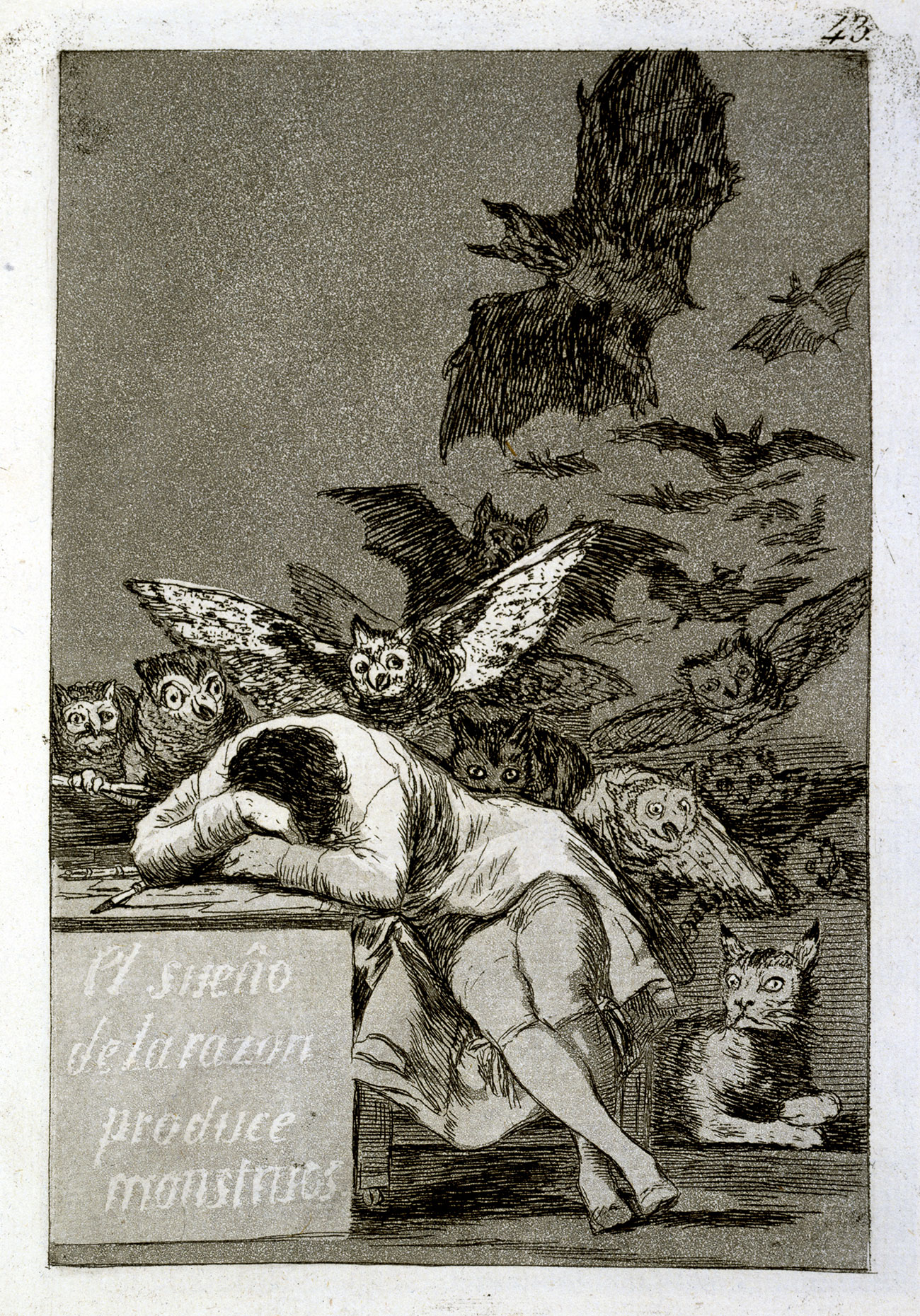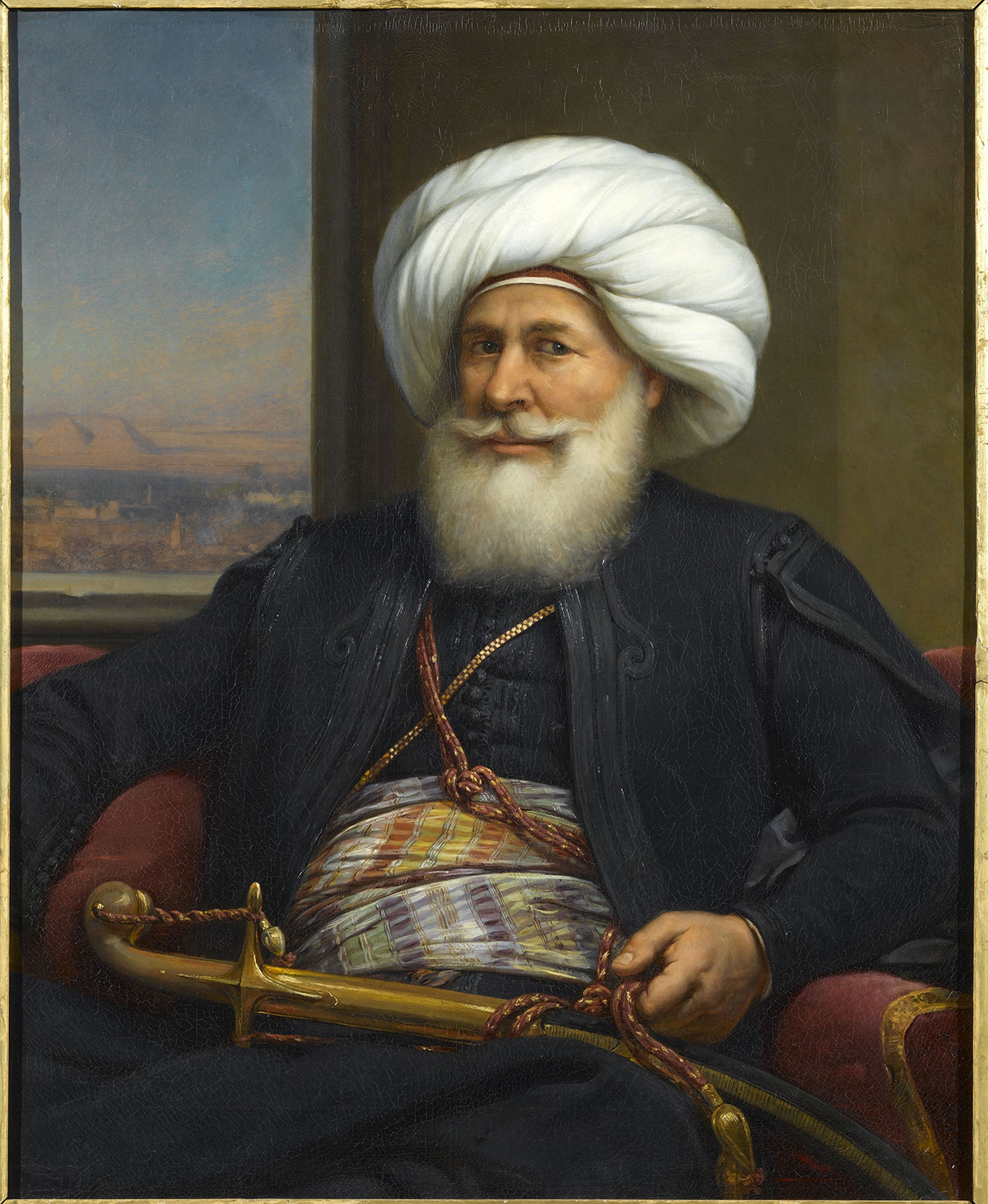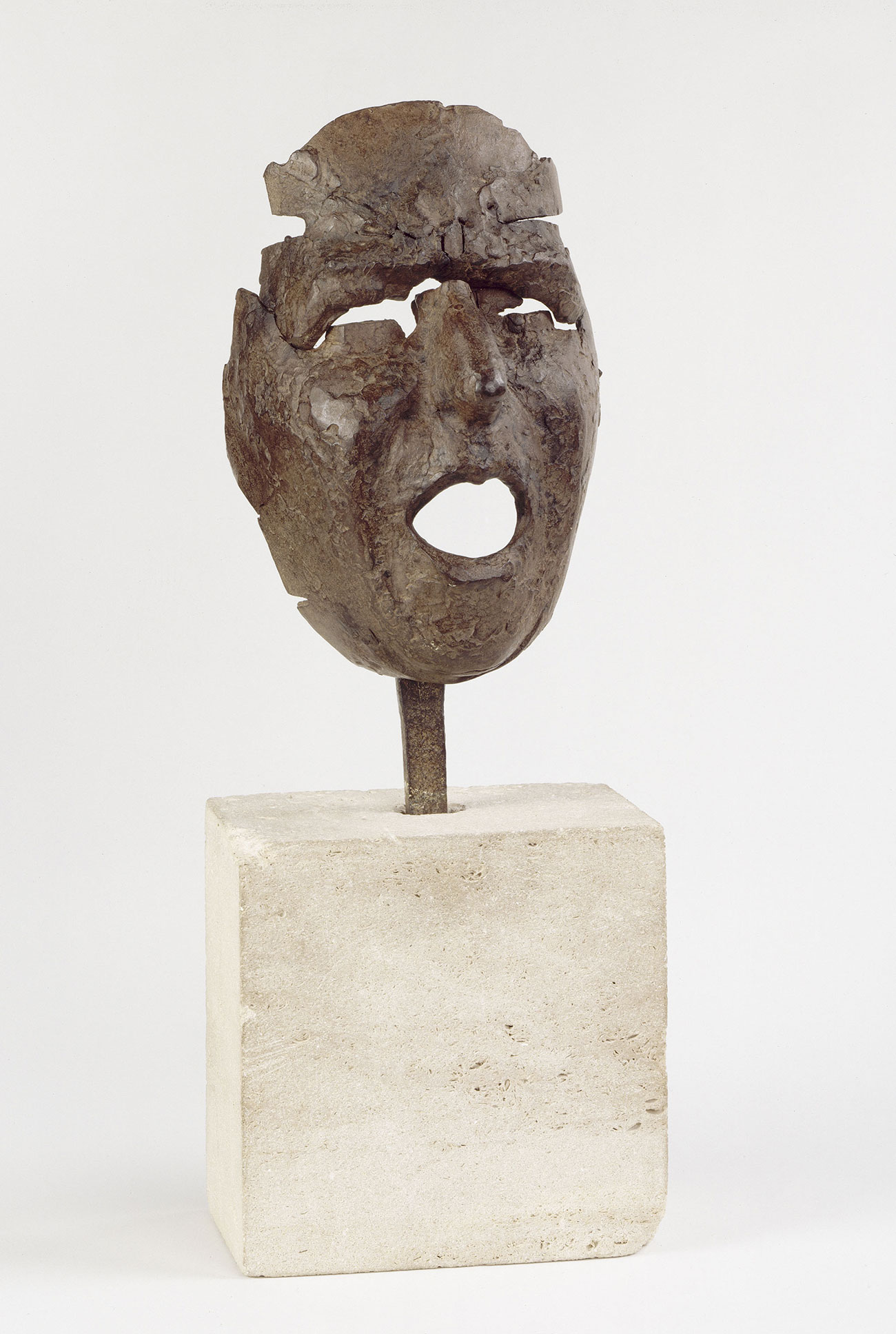The Black and the Blue, a mediterranean dream…
|
From Friday 7 June 2013 to Monday 6 January 2014
The black and the blue, Goya and Miro, ombre e sole…
The Enlightenment and its shadows, like both sides of a same world, a response to the very idea of civilisation, created in the 18th century. Goya is the key to this. Illuminados, man of the Enlightenment, he is one of the few who was able to see his shadows. In his Disasters of the war he revealed "what, in man, aspires to destroy him" (Malraux). This black colour, like a sort of continuous bass note, can be found throughout the exhibition. But with the black comes the blue...
Blue: "This is the colour of my dreams." Miro retreated to his island, Majorca, and immersed himself in the Mediterranean. Like the inaugural power of the dream, the utopia, his blue is a symbol, an icon even of this desire to find within man what creates him. A Mediterranean dream... A dream that often goes in one direction only, a projection of the North upon the South, that calls us to go and see what's happening on the other side of the mirror. What is the Other person's dream? Examining the perceptions and representations of the Mediterranean, this exhibition is an invitation to tell a story and to travel, in twelve phases, through the layers of time, from the 18th century to the present day. An invitation to dream that never forgets to confront the nightmares of history head-on, because "there is no document of civilization which is not at the same time a document of barbarism" (Walter Benjamin).
Coproduction: MuCEM, Marseille-Provence 2013, Rmn-Grand Palais
With the support of Louis Vuitton, partner of MuCEM and EDF, official partner of MP2013
In partnership with: France Info, France Bleu Provence, France 3, RFI, Radio Monte Carlo Doulaliya
Exhibition itinerary
1: A tour of the Mediterranean in the 18th century
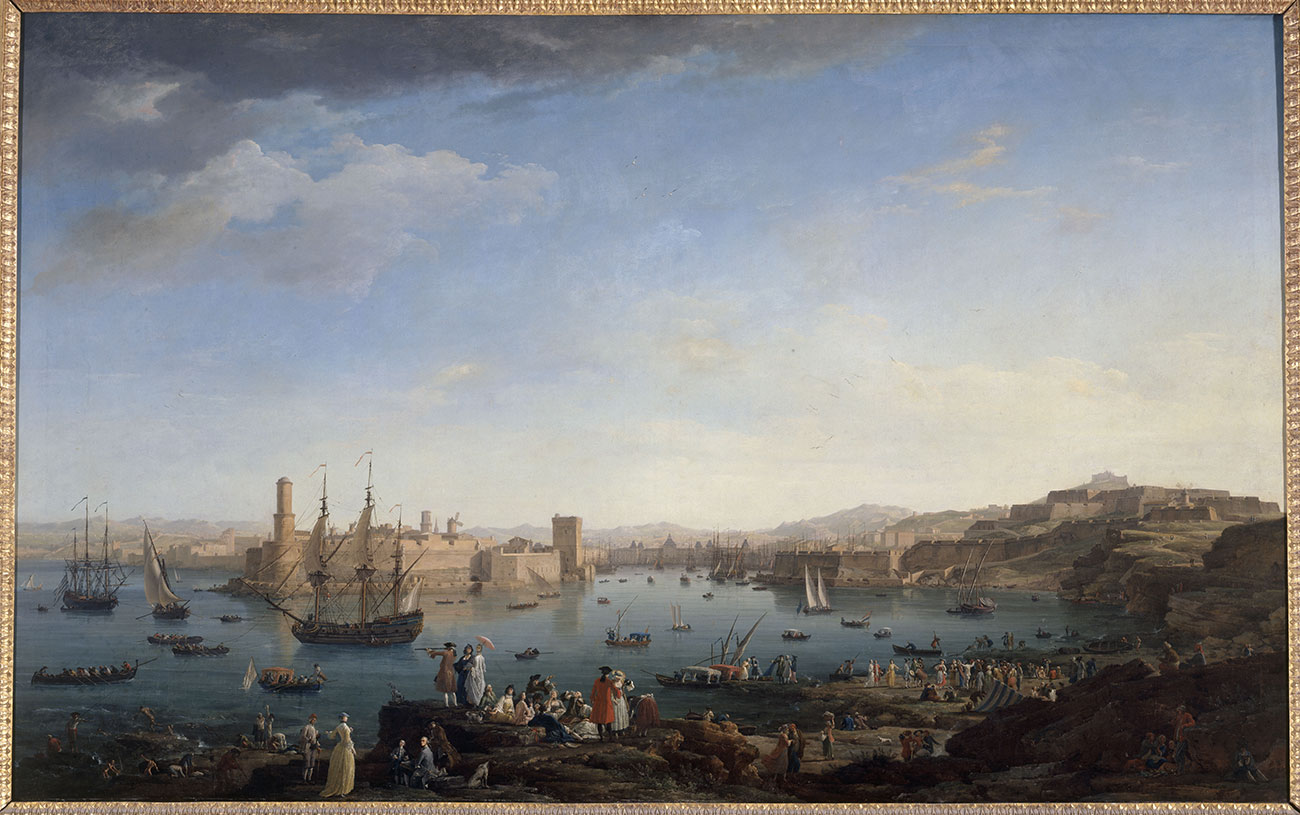
In the 18th century, the Mediterranean was both a region of connections and rivalry. The major power of the time was still the Ottoman Empire. Between one shoreline and the other, diplomatic relations were intense, trade was facilitated in the ports by the use of a common language, the lingua franca in Tunis, Algiers and Marseille.
Corsair and pirate activities were in decline, but European attitudes remained steadfast in recapturing the Christians taken hostage on the Barbary Coast while the Christian corsairs also captured Muslim prisoners at sea.
2: Conquest and civilisation
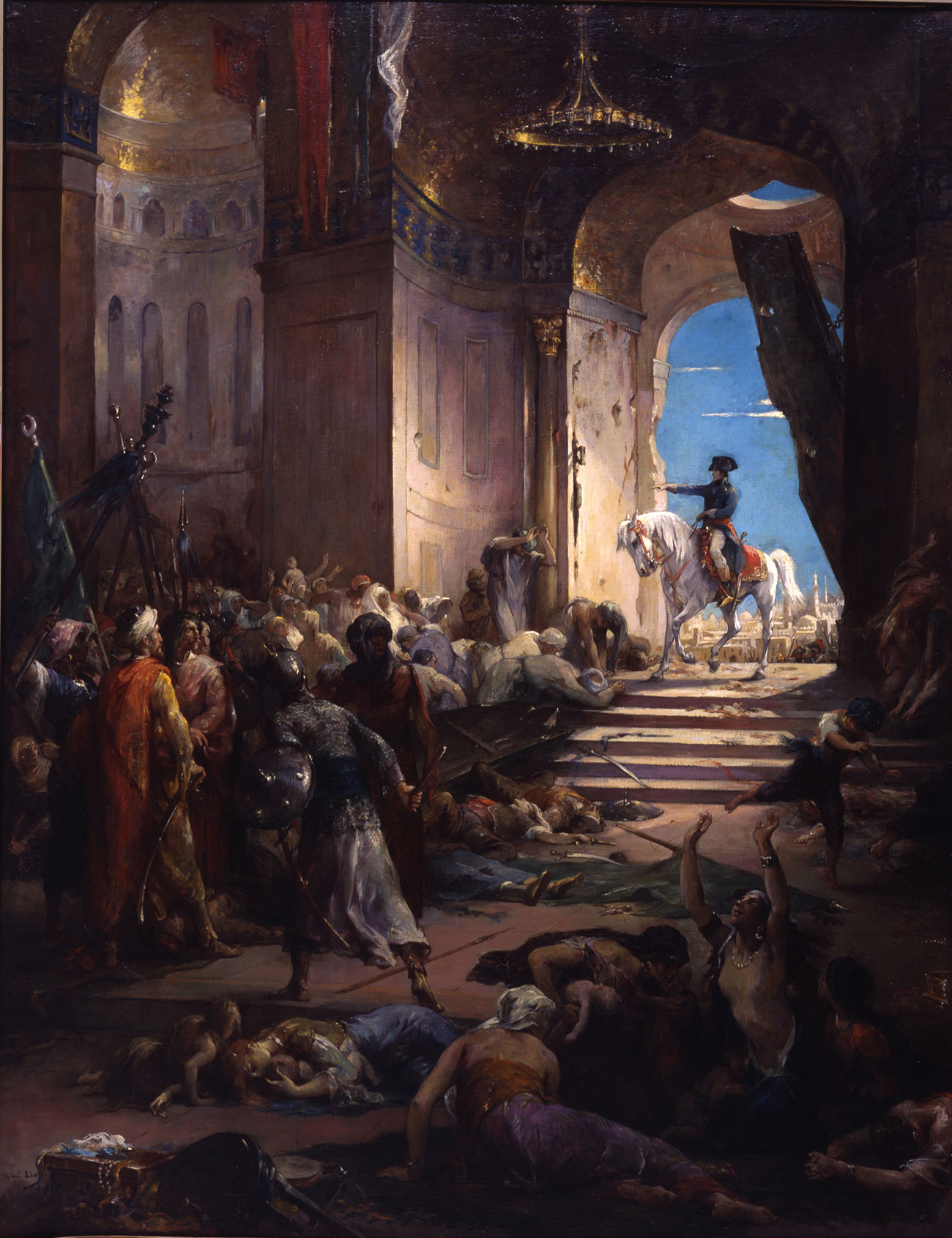
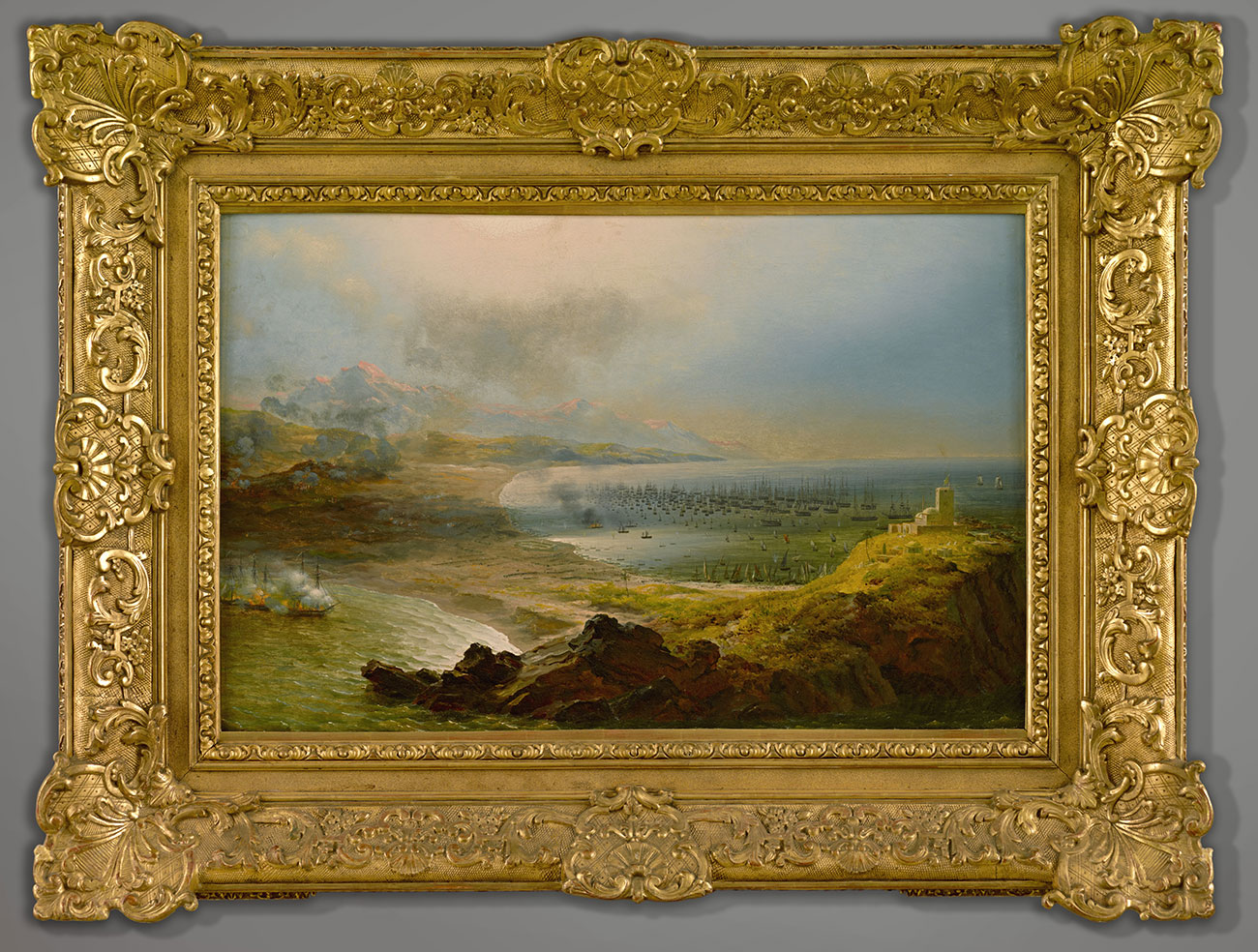
![Composition et installation de la Zemala [« smala »] d’Abd-el-Kader in Adrien Berbrugger, Algérie historique, pittoresque et monumentale, 1843 Composition et installation de la Zemala [« smala »] d’Abd-el-Kader in Adrien Berbrugger, Algérie historique, pittoresque et monumentale, 1843](/sites/default/files/2017-07/Composition%20et%20installation%20de%20la%20Zemala%20%5B%C2%AB%20smala%20%C2%BB%5D%20d%E2%80%99Abd-el-Kader%20in%20Adrien%20Berbrugger%2C%20Alg%C3%A9rie%20historique%2C%20pittoresque%20et%20monumentale%2C%201843.jpg)
In the 19th century, the Europeans thought that civilisation, an idea that arose during the Enlightenment, was not a civilisation but THE civilisation. The word civilisation was then contrasted with nature and then also with barbary. This gave the Europeans a justification for their conquests: the expedition of Egypt was designed to spread the Enlightenment for the purpose of rebuilding society and the society of Algiers wanted to leave the country of barbary.
While scientific explorations were being conducted under the protection of gunfire, the conquest was being conducted in the name of a "civilising mission".
Bonaparte in Egypt
With the expedition of Egypt (July 1798 - August 1801), Bonaparte was pursuing a military aim – blocking the route to India for the British – and a civilisation project – reforming and studying Egypt. But the people of Cairo did not bow down easily to these "armed missionaries" and started a revolt. The repression of the people would be brutal. The expedition was finally a military failure, Bonaparte had to leave Egypt, but it would become a legend that profited Bonaparte at the hands of painters who would glorify national history.
The expedition viewed by the Egyptians
There is a profusion of texts, engravings and paintings on the Egypt expedition on the French side, but the Egyptians also provide valuable accounts of their outlook of the event. Sheikh El-Gabarti, in his diary, speaks of the arrival of the French as if it were a tragedy and a break with "the course of events". He speaks about the violence that resulted in the revolt of Cairo and then the assassination of General Kéber. However, Gabarti is sensitive to the scientific resources provided by the French and their plans to modernise the country. He participated in the diwan, a meeting of public figures created by Bonaparte, alongside Al-Sharqâwi and Khalil al-Brakri. Youssef Chahine, in his film Adieu Bonaparte, gives us an idea of the Egyptian perspective two centuries later.
The conquest of Algeria
During the spring of 1830, King Charles X took advantage of the weakness of the Ottoman Empire to launch an expeditionary force against Algiers. The Dey of Algiers (Ottoman regent) capitulated on 5 July 1830 before an army of 37,000 soldiers. Despite the fall of Charles X, the army and the business community applied pressure to extend the conquest. The resistance organised itself around Abd el-Kader. The African army then entered into a full-blown war. Representations are shapeless. France used images to build up the story of its military saga. On the Algerian side, the revolt was expressed more frequently through the inspired words of the poets.
The Saint-Simonians
The Saint-Simonians were the first great messengers of the Mediterranean dream, of a "Mediterranean system" that, according to Michel Chevallier (1832), must link up steam and the railways. Influential among the students of Polytechnique, they developed projects considered to be utopian, some of which were completed: after a mission in Egypt, they presented the plan for the digging of the Suez canal that would later be taken up by Lesseps. Their faith in civilisation and technical and scientific advances resulted in some of them lending their support to the colonisation process while others such as Ismaÿl Urbain were authentic purveyors of information between the cultures.
Mehmet-Ali (1769-1849)
Sent to Egypt by the Ottoman Sultan Selim III, Mehmet-Ali, became pasha in 1805 and reorganised the country after the departure of Bonaparte. Dreaming of turning Egypt into a powerful state, he made use of European technical and scientific innovations (Pascal Coste, Clot Bey…), reformed the administrative authorities and the army, launched a policy for undertaking major construction works to develop the country and streamline agriculture, which began to export (cotton)… Although he achieved varied success, he remains the builder of modern Egypt in the Egyptian mind-set.
Scientific invention
Mare nostrum for the Romans, White sea for the Arabs and the Turks, this sea between the lands became, in the 19th century, a proper noun, the Mediterranean. The scientific expeditions of Egypt, of Morea (Greece), of Algeria made it possible to observe its flora and climate. The botanist Pyramus de Candolle spoke of the Mediterranean region, and the geographer Élisée Reclus defined it as the "mediating agent that tempers the climates" and "sea of contact" creating a favourable environment for the birth of major civilisations. These scientific observations were sometimes used to justify colonisation activities.
3: Antiquities
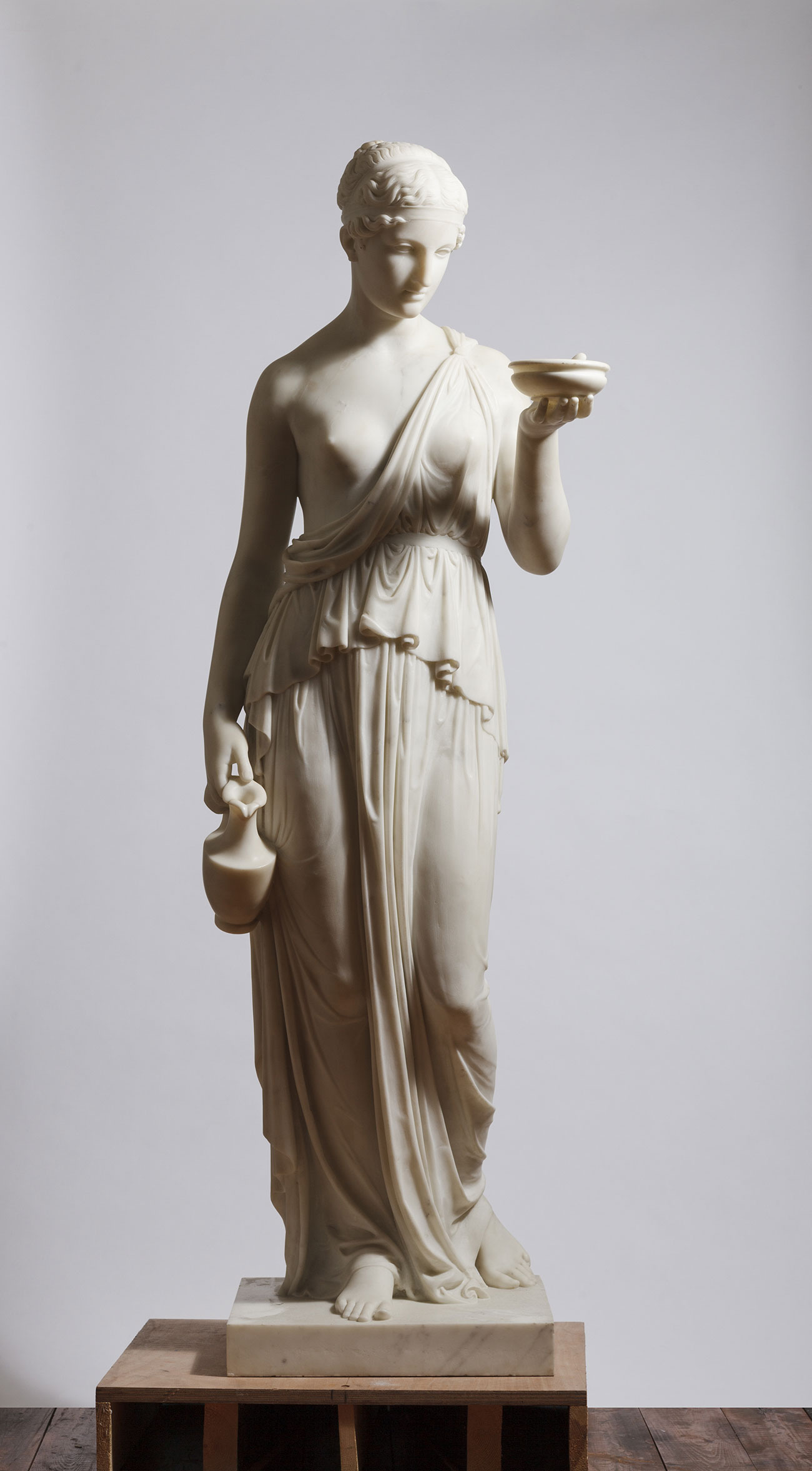
The appetite for antiquity is one of the major European pastimes. Greece is the focus of attention and the stuff dreams are made of. This taste for antiquity is to be viewed through the prism of mythology that of the "white Greece" theorised by Winckelmann. Philhellenism is the other aspect to take into consideration. As a literary passion inspired by Lord Byron in particular, it stimulated the emergence of a modern Greek state faced with the Ottoman Empire.
White Greece
In 1798, the vice-Consul of France in Athens cried out, "Everything was painted" when he saw the Parthenon. Today, science has proved him right, the Greek statues were indeed multi-coloured and wear and tear has removed the colours over time. As a symbol of purity in the West compared with the garish colours of the East, the whiteness of Greece, enhanced by the neo-classical sculptures of the 19th century, is a myth that will have a profound effect on our feelings and perception. This interpretation would be completely incomprehensible for a contemporary of Pericles, for whom the colour white was a sign of servitude and not of virility.
Philhellenism
A literary and political movement, inspired, in particular, by Fr. Barthélemy's book Le Voyage du Jeune Anacharsis en Grèce, (the journey of the young Anacharsis in Greece), philhellenism fuelled the Greek uprising of 1821 against the "Ottoman barbarism". The poet, Lord Byron, who died at Missolonghi, was one of the champions of this love of classical Greece that spread throughout Europe. Philhellenism created an ideal vision of Greece, with its ancient forms that were a far cry from the Greek society of the 19th century.
4: Holiday
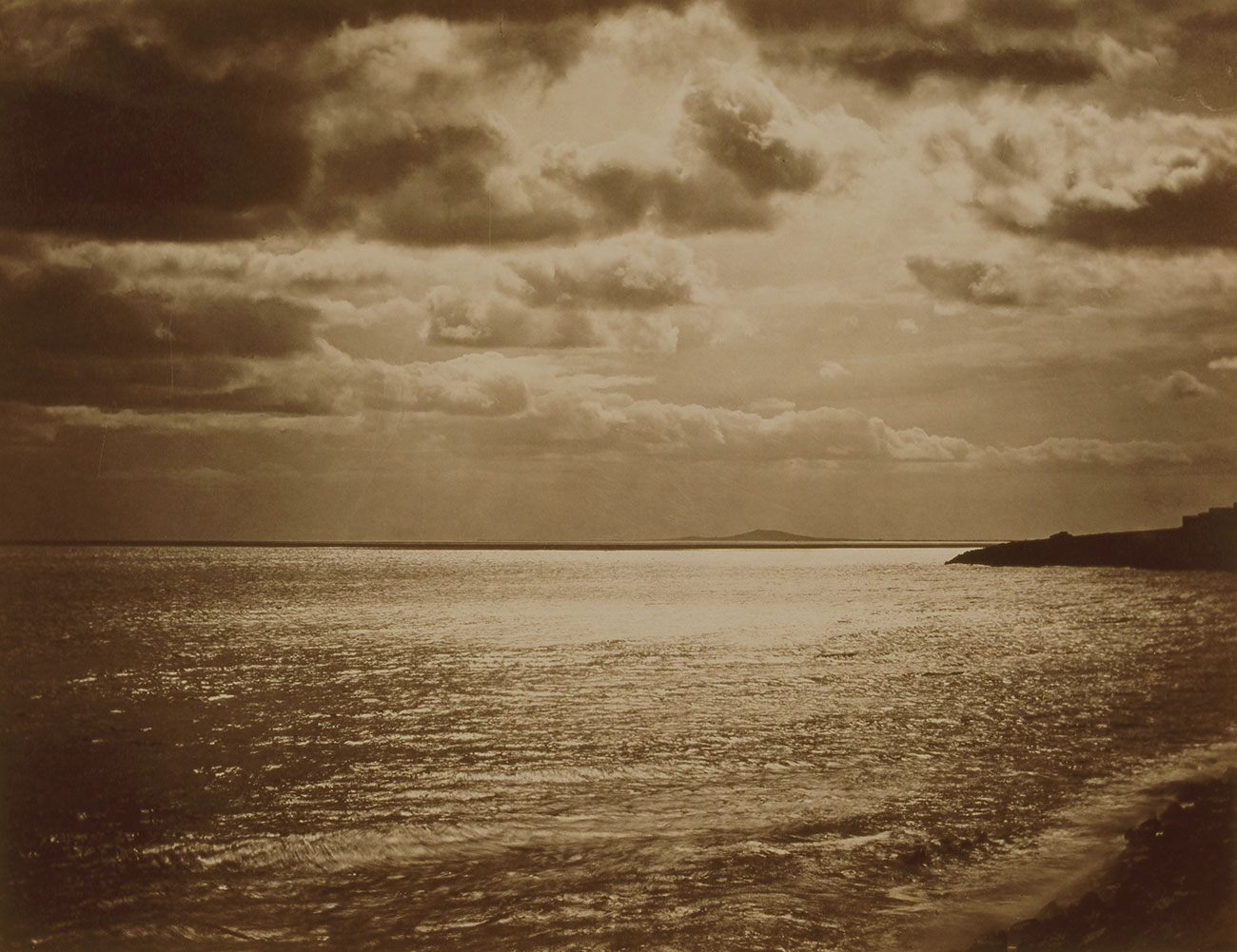
European high society invented the holiday on the shores of the Mediterranean in the 19thcentury to take advantage of the warm winters as well as the archaeological or natural sites. Writers and artists contributed to the development of openness to the sea. Beach and sea bathing became newfound pleasures. Grand hotels, luxurious villas and gardens where tropical plants have acclimatised thereby changing the scenery. The elite go there to enjoy their holiday periods. Railway, carefully packed trunks and sea routes extend these travels throughout the Mediterranean.
5: Trade and cosmopolitanism
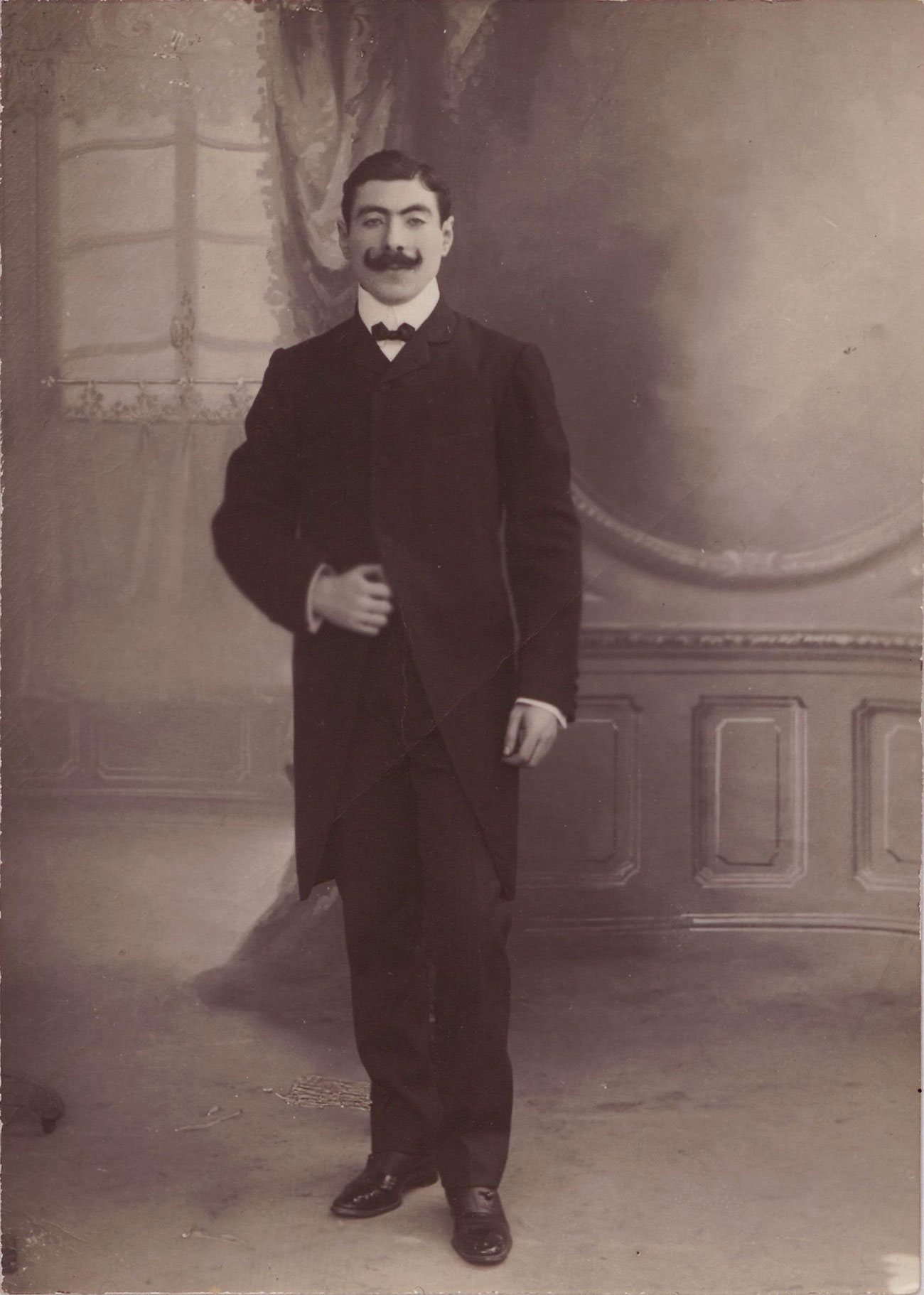
The pace of trading and commerce will have profound repercussions on the Mediterranean in the 19th century. The creation of the Suez canal, designed by Ferdinand de Lesseps, as the heir of the Saint-Simonians, symbolised this new era that mixed up different economies and populations. The shape of the city-ports changed and this can be seen in the archive pictures, while there is a rise in Mediterranean cosmopolitanism between public figures as well as so-called "undesirables" from the lower echelons of society. Here are three singular examples: Istanbul, Alexandria and Beirut.
6: A shared dream?
The Mediterranean of Maillol is like the symbol of this moment. The happy reminder of a possible shared world, of a call to give a Mediterranean twist to the thinking that Nietzsche, Valéry and Taha Hussein will express in their own way. A form of Mediterranean syncretism emerged in literature, the world of journals, poetry and music, like the Andalusian dream that Manuel de Falla and Federico Garcia Lorca attempted to rekindle. But the tragedy announced by the Minotaur, in the eyes of Masson, Picasso or Miro, bear witness to the fragility of this dream.
An Andalusian dream
It was with the rebirth of the cante jondo, this deep chant that comes from the very heart of the Mediterranean, that Manuel de Falla and Federico Garcia Lorca make all the riches of the Arabic-Andalusian heritage available for our pleasure. Music and poetry bear witness to this blend of cultures, of which the cante jondo competition of 1922 provides a vibrant example. An Andalusian dream that allows us to become familiar with the duende, this deep and interior source of inspiration...
7: Domination and affirmation
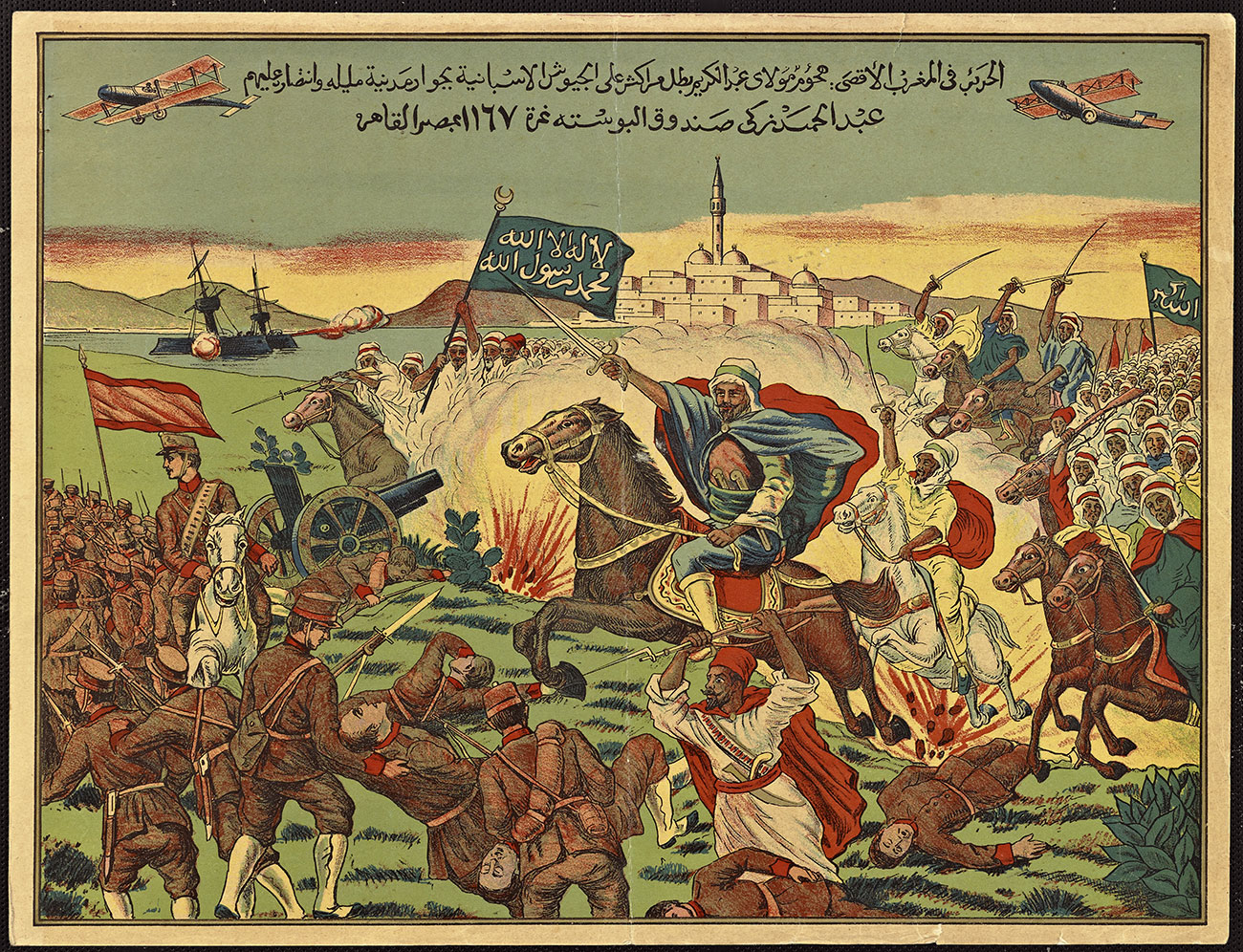
During the interwar period, the European powers took every opportunity to demonstrate their supremacy. The colonised countries provided the backdrop for these demonstrations of might: centenary of Algeria, Carthage Eucharistic conference in 1930, Mussolinian dream of a fascist Mediterranean fuelled a prodigious amount of visual propaganda, from posters to postcards, including paintings, sculptures and movies. This strongly contested moment of high drama facilitated the rise of North Africa's nationalist claims. Abd el-Krim in Morocco gave the signal.
The fascist dream faced with the resistance
Mussolini and fascist Italy dreamt of power and conquests. A personality cult organised itself around the Duce. Futuristic artists championed modernity, speed, machines as well as virility and war. Mussolini relied on the return of ancient Rome to sanction his new empire dominating the sea: he invaded the whole of Libya in 1930, repressed large numbers of its population and deported several thousand people. Omar al-Mokhtar resisted against this occupation and consequently became a hero throughout the Arab world.
8: A broken and reinvented dream
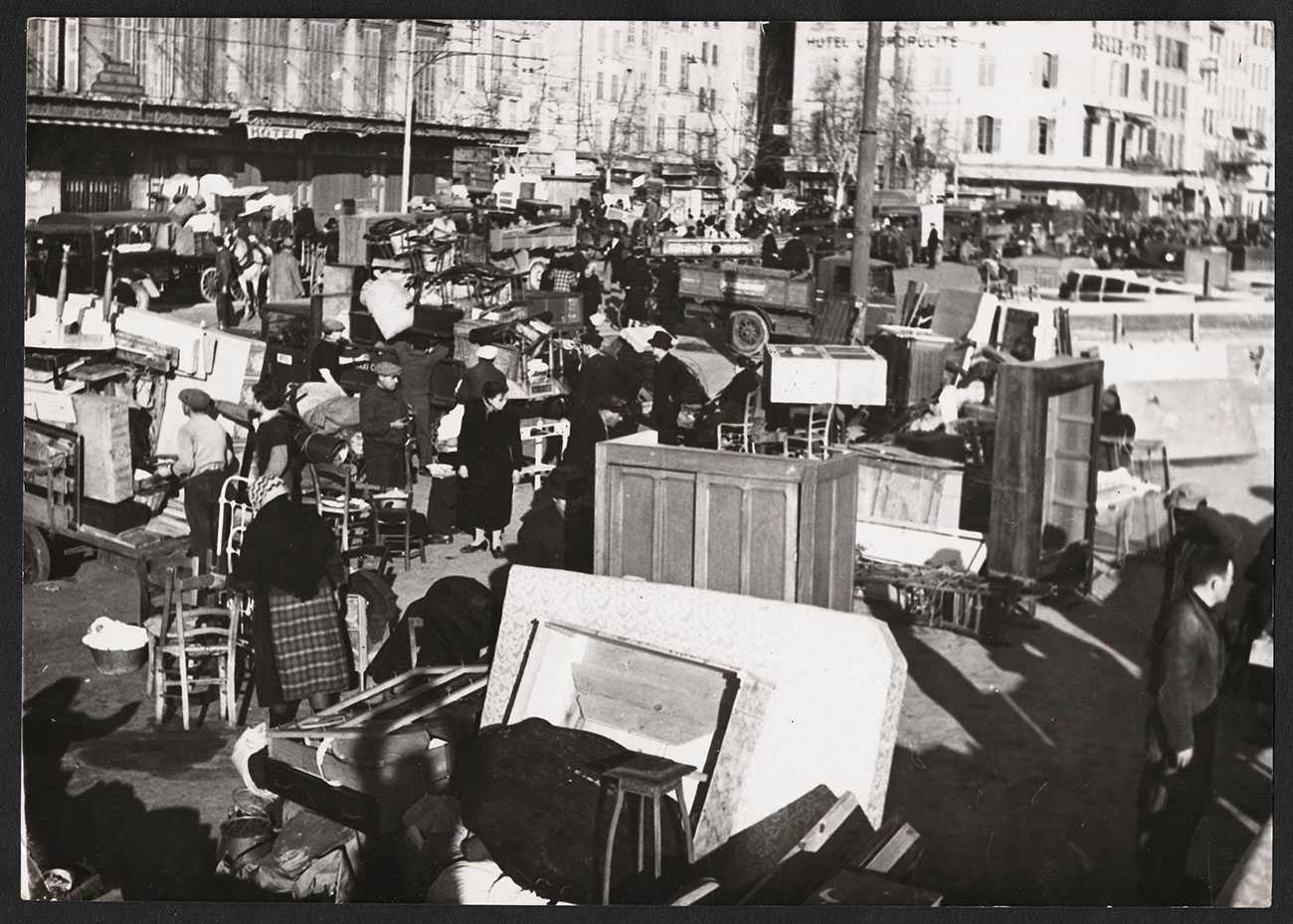
The black crossed the blue... The dream of some could not be confused with dream of the others Civil wars, the desire to regain sovereignty, the expulsion and deportation of peoples, the violence of history ripped through the entire Mediterranean. In these times of deep conflict, cities tore themselves apart: Smyrna (1922), Barcelona (1936-39), Marseille (1943), Sétif (1945), Jerusalem (1948), Suez (1956), Algiers (1962). But the Mediterranean dream will soon be reinvented after the war by the world of knowledge as well as the world of art and poetry.
Reinvention through the world of knowledge
It was when he was a prisoner at Lübeck that Fernand Braudel wrote his seminal thesis on the Mediterranean. Germaine Tillion, starting with Algeria and its Harem and the cousins, such as Jacques Berque, who called for "the Andalusias to start again and again", found a way to reconfigure the Mediterranean world. This was also the belief of Julian Pitt-Rivers with his anthropology of honour, of Giorgio La Pira in his calls to open up dialogue, from Florence, or of René Habachi in Beirut, with the conferences of the Cénacle, where he attempted to redefine a new Mediterranean humanism.
Recreation through the poets and artists
The imagination is what creates history. The meeting of poets and artists, such as Jean Sénac and Baya, René Char and Nicolas de Staël, Edmond Jabès and Antoni Tapies, Odysseus Elytis and Abdallah Benanteur, Adonis and Shafic Aboud, Rachid Koraïchi and Mahmoud Darwich, will give the Mediterranean a new face. Fragments of an artistic constellation that light up our face and create a new aesthetic where the Mediterranean world recovers part of its centrality.
9: Blue tourism / black mafia
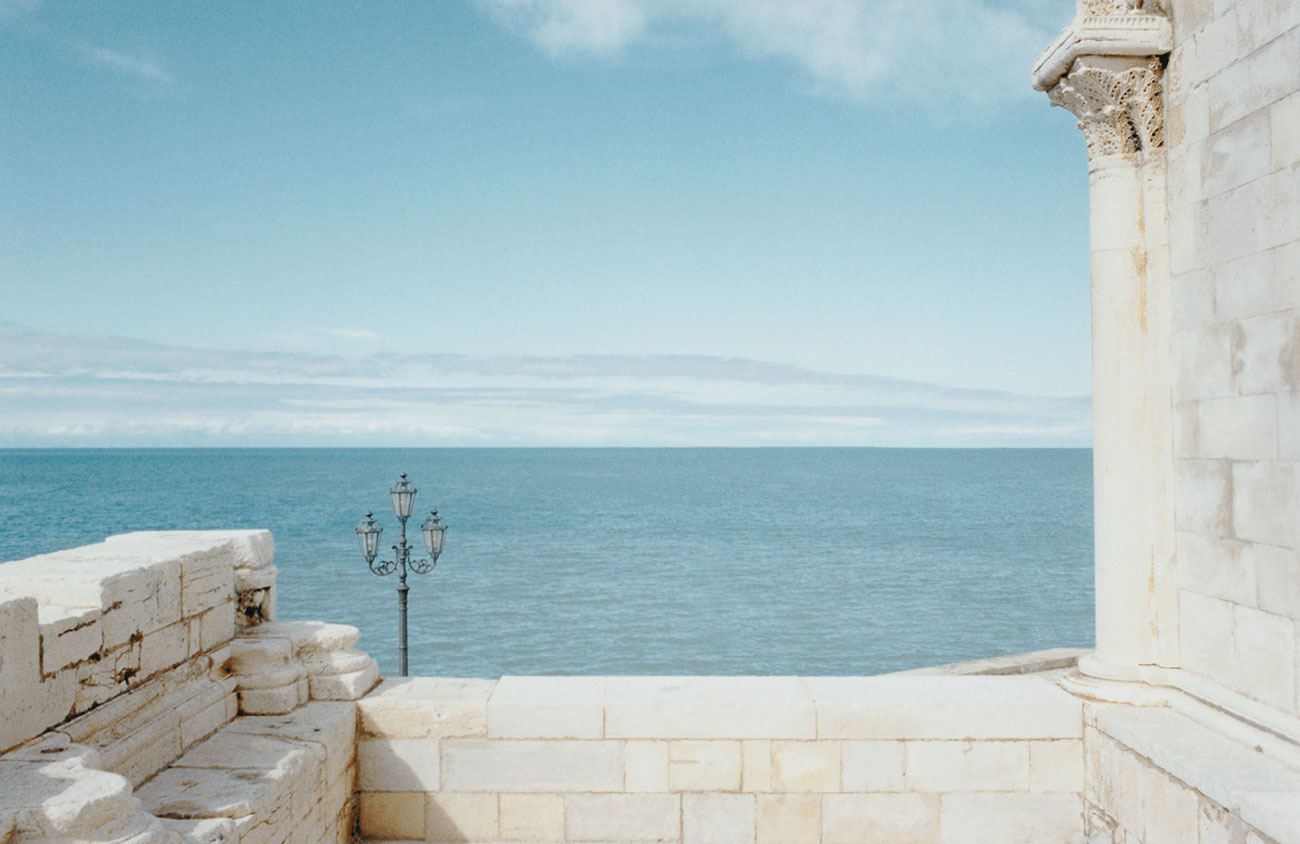
With tourism, the Mediterranean dream became secularised. The privileged area for the civilisation of leisure, that Malcolm Morley depicts candidly. The blue tourism, captured by the eye of photographers such as Luigi Ghirri and Massimo Vitali, became the iconic colour of advertising. But there is a dark side to the enchanting world of mass tourism. The mafia is never far off to "help itself to the town". Franco Zecchin, with a series of captivating photos, gives us some insight into this dark world.
Blue tourism
In the 1960s, the Mediterranean become the number one tourist destination in the world. Formerly a holidaymaking location, the shores of this middle-sea are changing with the explosion of property speculation. Massimo Vitali, with his large-format prints, reveals the world of the seaside resort while Luigi Ghirri shoots the contours of this empty theatre. A changing civilisation emerges before our very eyes. Not without a touch of irony, Malcolm Morley depicts this backdrop and allows us to enter this hedonistic world…
Black mafia
The mafia submerges its black legend in the history of the Mediterranean. It starts in Sicily, and more particularly in Palermo, where Cosa Nostra asserts its power through violence, settling scores and embezzlement. It's this tragic and frequently morbid world that the photographer Franco Zecchin reveals, in his theatre of cruelty where those who fight against the octopus are not absent, namely, Pepino Impastato, the judges Falcone and Borsellino and the writer Leonardo Sciascia.
10: The dark years of the Mediterranean
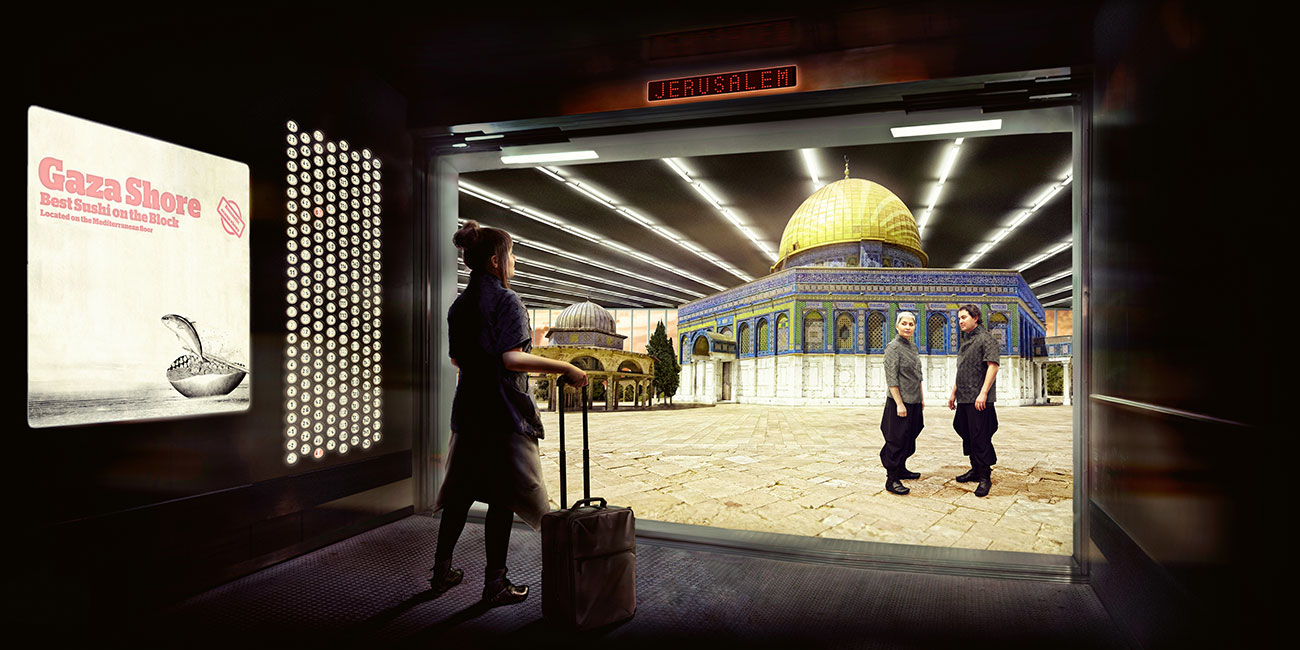
While Europe was at peace, the Mediterranean was at war. In a war against itself, against the urban planning and city life from which multiple different communities made their livelyhood in the same city. Starting in 1975, Beirut imploded at the heart of the contradictions of the Near-East. Gabriele Basilico photographed the wounds. Algiers crossed a "black decade" (1990-2000), of which Ammar Bouras reproduces multiple fragments, around his setup. Sarajevo experienced one of the longest sieges of a city in history between 1992 and 1996, the spirit of which was captured by Theo Angelopoulos in the extract from his film, Le Regard d’Ulysse. Jerusalem was becoming increasingly divided, separated, between Israel and Palestine. Michal Heiman, who refers back to Goya, like Larissa Sansour, who makes use of black humour, allows us to get a glimpse of this flaw.
11: Crossings
Mediterranean, open sea?
While the gas pipelines and the goods cross it from South to North, the sea forms a border for the people of the South: differences in standards of living, political instability, dreams of an easier life encourage them to leave. These Harragas (road burners) venture across the sea and its dangers on frail skiffs. How many of them have perished? Mothers speak of a new burial place at sea. Turning their attention to the plight of migrants, the artists capture all their humanity, in stark contrast to the cold statistical data on human migration.
12: A blast from the future
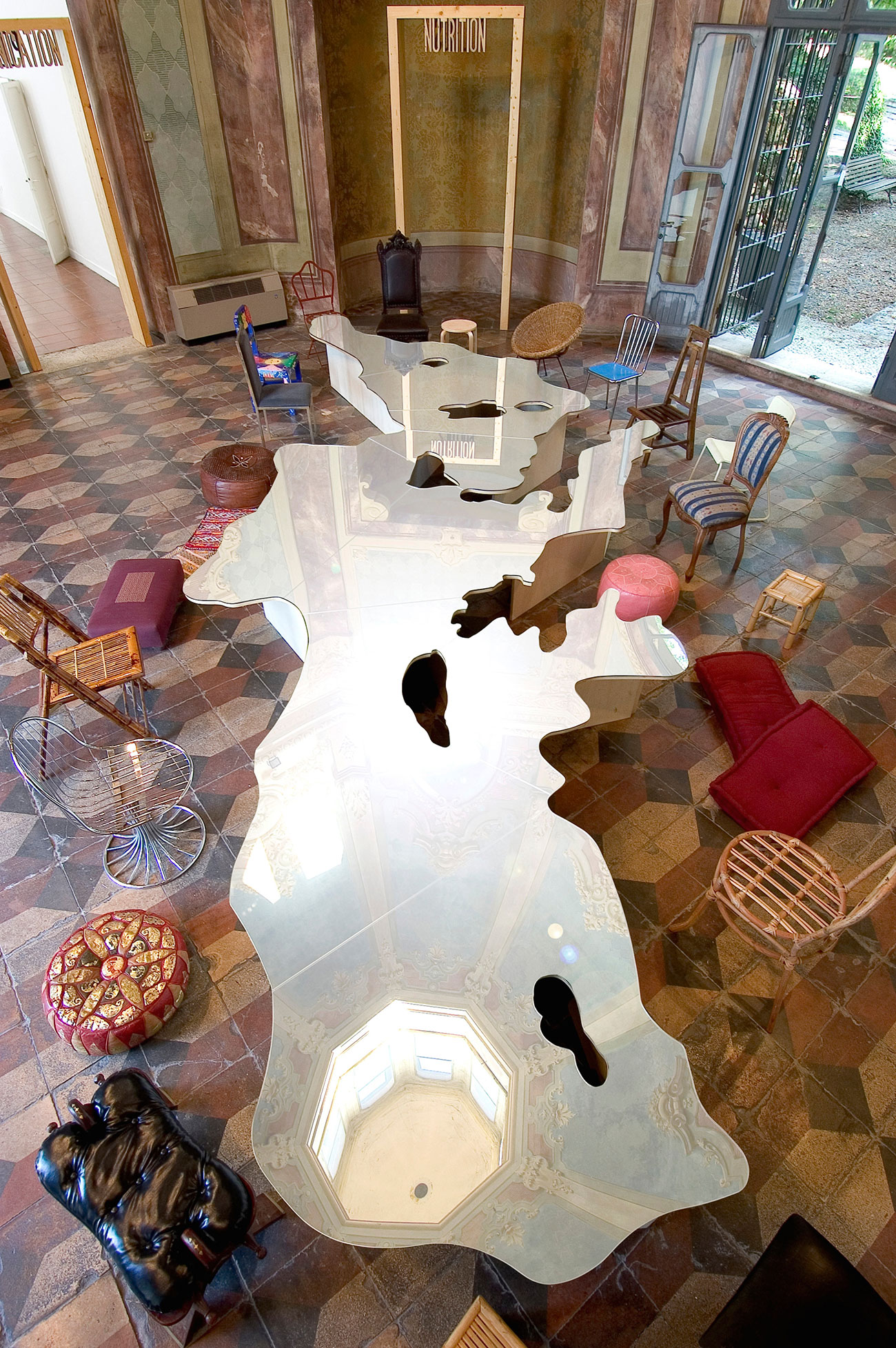
"With every collapse in the evidence, the poet responds with a blast from the future."
René Char clears the way for this way of thinking, this desire and this enthusiasm that strives to transform the established order. In the face of introspective attitudes, hatred and fear, he responds with "the love of differences", that Michelangelo Pistoletto builds up like a symbol in his mirror table of the Mediterranean.
The horizon opens with the upheaval of the Arab revolution in Tunis, Cairo and Tripoli, like the contentions of the people in the public squares in Madrid or Athens. The nightmare of violence, obscurantism and hatred are never far away, but a dream, that never ceases to return, is being fulfilled before our eyes.
